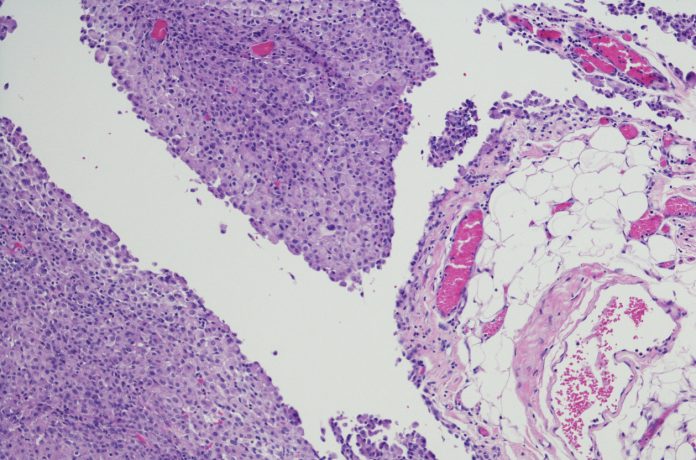Dr Avinash Hari Narayanan (MBChB), Clinical Lead at London Medical Laboratory, explores the key challenges in mesothelioma prevention, diagnosis and treatment
Mesothelioma, a rare and deadly cancer affecting the lining of several vital organs, remains a perplexing puzzle in the world of oncology. Historically linked to asbestos exposure, mesothelioma poses a significant challenge to early detection, effective treatment and remains a highly fatal occupational disease. Despite advances in public policy, occupational medicine and research, the potential of a mesothelioma-free future remains unclear.
Asbestos, a naturally occurring fibrous mineral once lauded for its heat resistance and insulation properties, has now been unequivocally linked to mesothelioma. Pervasive in various industries, from construction to shipbuilding, asbestos exposure remains a pervasive threat despite its gradual decline due to safety regulations.
It is a carcinogen which was widely used in the UK up to the 1990s before being eventually banned, but buildings constructed before the 2000s may still contain this substance, posing an ongoing health hazard to the public. Occupational exposure continues to affect workers in older buildings and in regions where asbestos is still in use. Moreover, secondary exposure, where family members inadvertently bring asbestos fibres home on their clothing, also adds to the insidious reach of this carcinogen.
The exact pathological substrate underlying the onset of cancer from asbestos exposure is subject to ongoing research. Exposure to asbestos results in microscopic accumulation of the mineral fibres in the mesothelium, the bodily tissues in the linings of the lungs, heart, and abdominal organs.
Naturally, the body recognises this as a foreign substance and the immune system is activated to facilitate its removal. Indeed, in the case of asbestos, most fibres are expelled by the immune system and its movement through mucus clearance, but a fraction will always remain and exhibit resistance to clearance. Clearance is certainly more difficult in the case of asbestos accumulation surrounding the heart and abdominal organs.
These non-cleared remnants will persist over years and decades and result in chronic inflammation, genetic mutations, and uncontrolled cell growth, leading to cancer development.
A silent but fatal lung disease
Pleural mesothelioma is the most common mesothelioma, predominantly affecting the pleura, which lines the lungs. It accounts for over 90% of all mesothelioma cases in the UK, where 90% of cases are attributed to asbestos exposure, while the remaining are considered rarer disease manifestations.
Mesothelioma develops insidiously, presenting with non-specific symptoms such as chest pain or persistent coughing, often attributed to common respiratory ailments. As the disease progresses, symptoms intensify, leading to breathlessness, unexplained weight loss, and fatigue. Unfortunately, the presenting nature of the condition often leads patients to seek medical attention only when the disease has already advanced.
In the UK alone, approximately 2,700 people are diagnosed with mesothelioma each year, and the disease tends to progress slowly, with an average latency period of 30-40 years from asbestos exposure. Mesothelioma UK notes that the average age at diagnosis in a cohort of over 7000 patients was 75.7 years. With delayed disease detection, treatment options become limited, and the prognosis is poor.
The staging, or severity assessment of disease spread is broadly like other cancers and is recommended by the International Mesothelioma Interest Group (IMIG), where stage 1 indicates cancer in the pleura on one side of the chest while stage 4 indicates deep and distant spread of cancer to other tissues. 60% of patients survive to one year in stage 1, while comparably, only 30% do in stage 4 disease. Cancer Research UK estimates that 45% of patients survive in the first year, while only 5% of patients survive to five years.
Mesothelioma diagnosis broadly involves radiological imaging and tissue testing. Identifying mesothelioma from other cancers or benign conditions can be daunting due to its non-specific radiological appearances. The gold standard for mesothelioma diagnosis is a biopsy, where a small sample of tissue is examined for the presence of cancerous cells.
The stark reality is that mesothelioma currently has no cure, but its poor prognosis need not amount to a death sentence. The extent to which mesothelioma can be controlled depends on various factors, including the stage at diagnosis and the overall health of the patient.
Prolonging life
Treatment options for mesothelioma are multifaceted and depend on the stage and location of the disease. Surgery, a vital component of treatment, is most effective in early-stage cases where the tumour is localised and has not spread extensively. Surgical procedures aim to remove the tumour and affected tissue, potentially offering a chance of cure or long-term control. In the UK, these interventions are centralised and provided by highly specialised tertiary centres with operational expertise.
Centres like the Papworth Mesothelioma Service and the Royal Marsden Hospital offer cutting-edge surgical procedures and comprehensive care for mesothelioma patients. However, these procedures are complex and not without risks, making patient selection and evaluation crucial. Other treatments include radiation therapy, which can help shrink tumours or alleviate symptoms, and chemotherapy, often used in conjunction with surgery or as palliative care for advanced cases.
Immunotherapy and targeted therapies are also emerging as promising avenues, with ongoing clinical trials offering glimpses of potential breakthroughs, but these remain at a great distance from current clinical practice.
A mesothelioma-free future?
The battle against mesothelioma continues to be an uphill struggle, and the statistics in the UK underscore the urgency of addressing this issue. Compared to other cancers, Mesothelioma may perhaps be considered an orphan disease, given the progress that has been made in treatment and survival for other cancers such as breast cancer and melanoma.
The link between asbestos exposure and mesothelioma underscores the imperative of strict safety regulations, asbestos abatement efforts, and the creation of an occupationally holistic medical perspective. While a cure remains elusive, advancements in treatment options offer hope for improved outcomes and quality of life for those affected by this insidious cancer. Awareness, education, and ongoing research are our allies in the quest to unravel the mysteries of mesothelioma and provide a brighter future for those affected by it.








